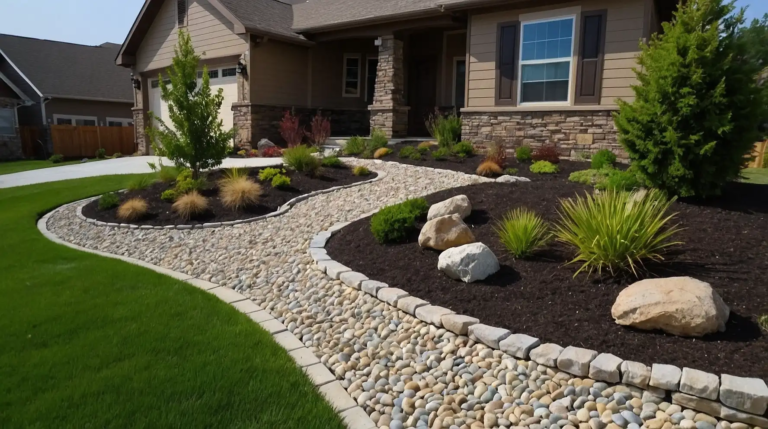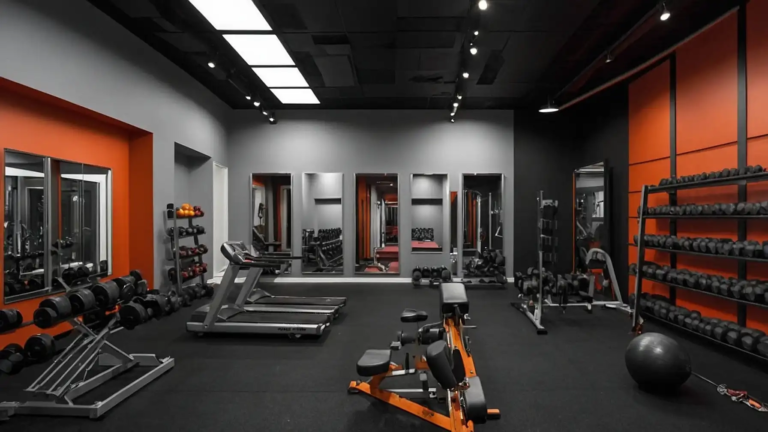21 Stunning Modern Living Room Ideas That Will Transform Your Space
Your living room serves as both the heart of your home and a reflection of your personal style.
Modern design approaches can transform this central space into a sophisticated, functional retreat that balances aesthetics with everyday livability.
Today’s modern living rooms embrace clean lines and thoughtful minimalism while incorporating warmth through texture, natural elements, and personalized touches.
The best contemporary spaces feel curated rather than cold.
With attention to key design principles and strategic decorating choices, you can create a modern living space that feels both current and timeless.
Here are 21 ideas to inspire your own modern living room transformation.
1: Statement Lighting Fixture
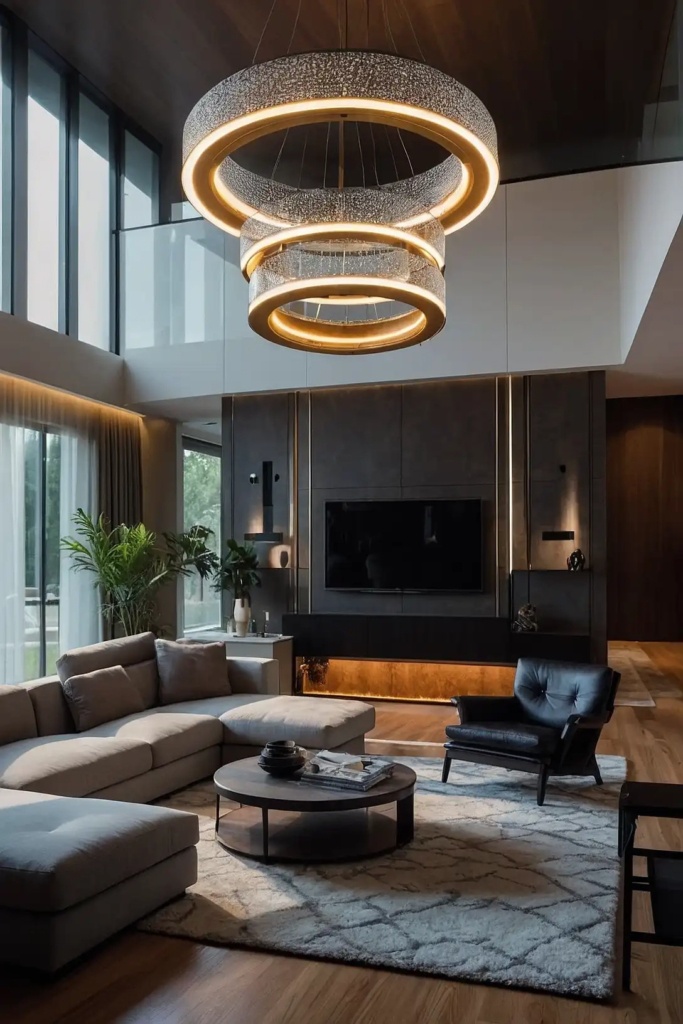
Replace standard ceiling lights with an architectural pendant or chandelier that serves as a functional art piece.
Oversized or uniquely shaped fixtures create instant visual interest in modern spaces. The lighting element becomes a conversation-starting focal point.
Choose designs with clean lines and interesting materials like brushed brass, matte black, or hand-blown glass for contemporary appeal.
2: Monochromatic Color Scheme
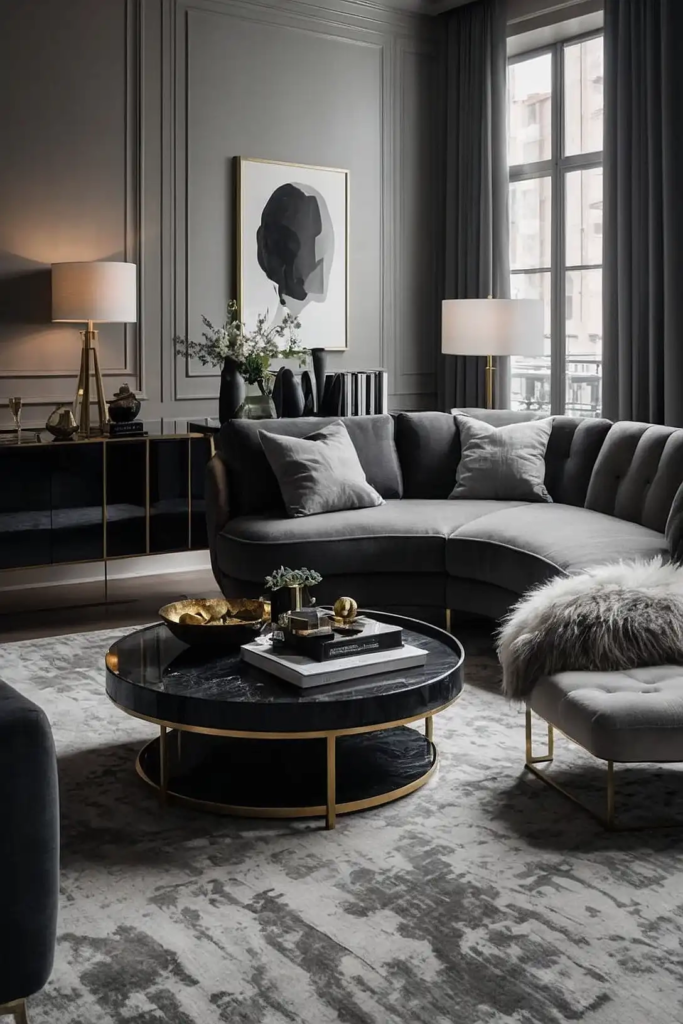
Create sophisticated harmony by designing your space around variations of a single color.
This modern approach simplifies your palette while creating depth through different shades and textures.
Use various tones and intensities of your chosen hue throughout the room.
The cohesive palette feels intentional and calm, allowing architectural elements and statement pieces to shine.
3: Mixed Metals Approach
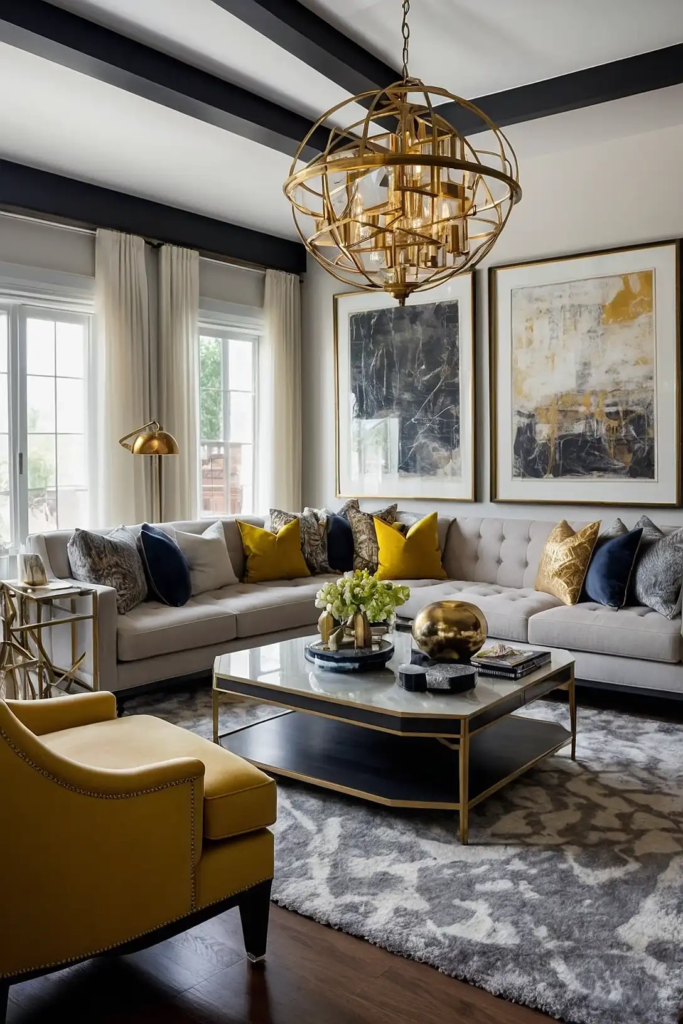
Combine different metal finishes like brass, chrome, and blackened steel for a contemporary, collected look.
This updated approach abandons the outdated rule that all metals must match. Limit your selection to 2-3 metal tones for cohesion.
Use each metal at least twice throughout the space to create intentional repetition that ties the room together harmoniously.
4: Floating Media Wall

Install a wall-mounted media console and TV for a sleek, clutter-free entertainment area.
This contemporary approach eliminates bulky furniture while creating the illusion of more floor space.
The floating design improves visual flow and simplifies cleaning.
Choose a unit with hidden storage components to maintain the minimalist aesthetic while concealing electronic equipment and accessories.
5: Oversized Art Display
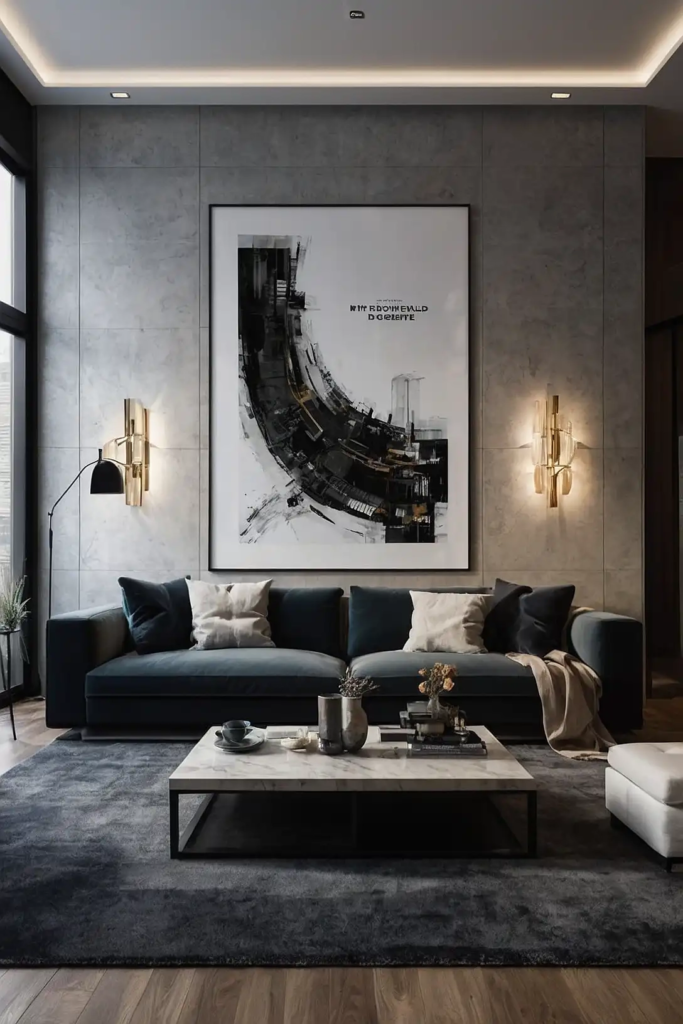
Hang one large-scale piece of artwork rather than multiple small pieces for maximum impact.
This gallery-inspired approach creates a bold focal point while maintaining clean, uncluttered walls. The singular focus feels inherently modern and intentional.
Choose abstract or contemporary pieces with colors that complement your existing palette for a cohesive, curated look.
6: Layered Textures
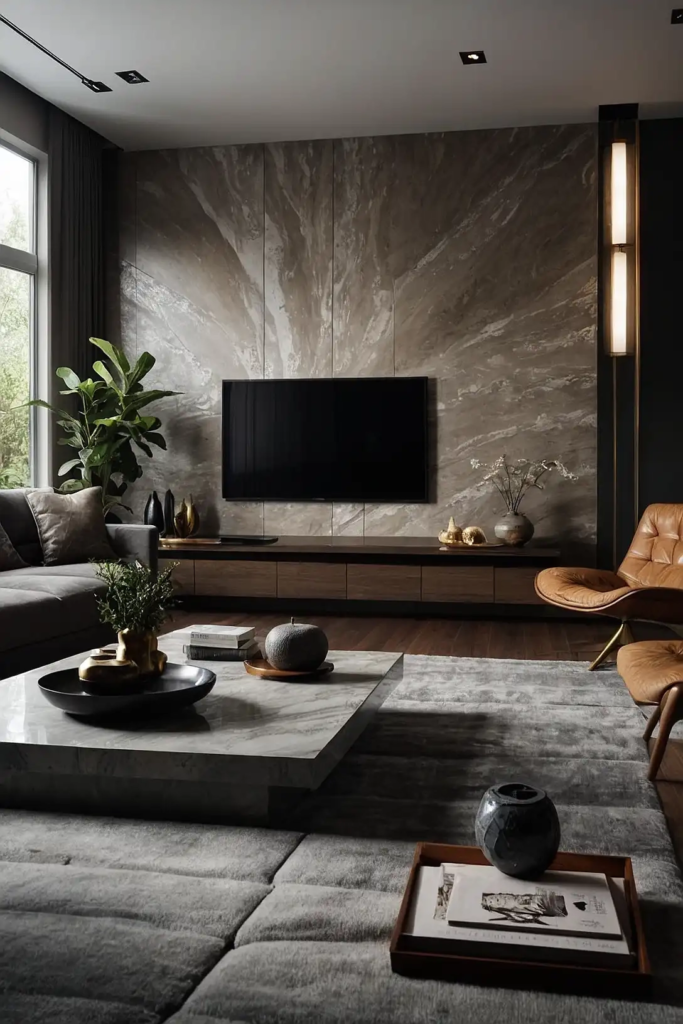
Incorporate multiple textures through upholstery, throws, and accessories while maintaining a controlled color palette.
This technique adds warmth and dimension to modern spaces that might otherwise feel cold. Mix materials like bouclé, leather, linen, and velvet for tactile interest.
The textural variation creates subtle complexity in monochromatic or minimalist rooms without adding visual clutter.
7: Sculptural Furniture Pieces
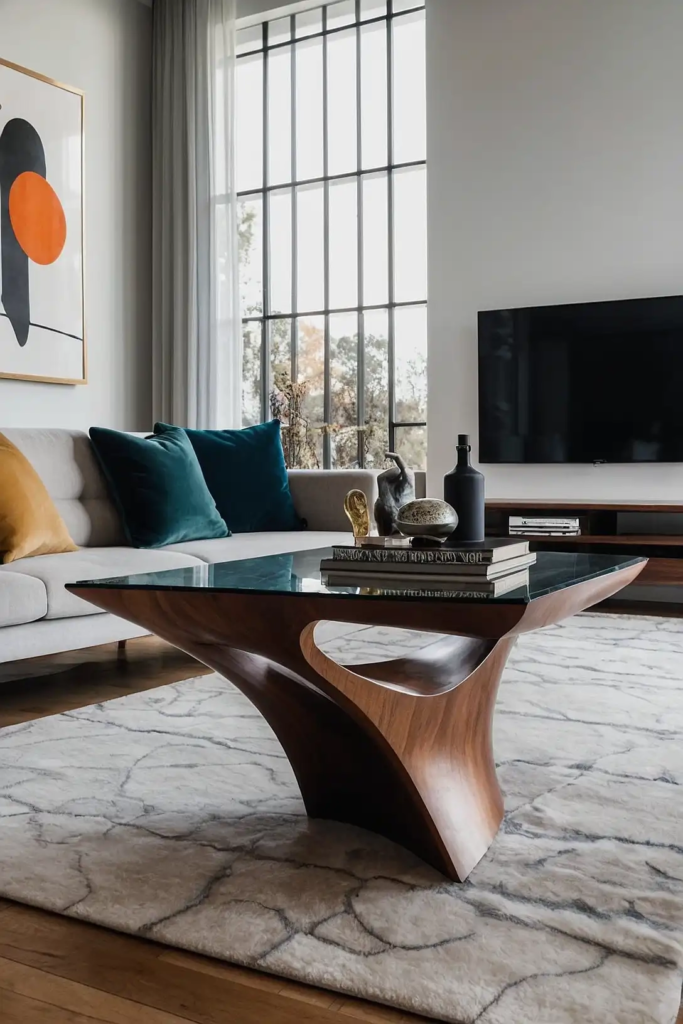
Select seating and tables with distinctive architectural forms that double as functional art.
These statement pieces elevate your space with their unexpected silhouettes and innovative designs.
Focus on interesting shapes rather than ornate details for truly modern appeal.
Choose one or two sculptural items and surround them with simpler pieces to prevent visual competition.
8: Considered Negative Space
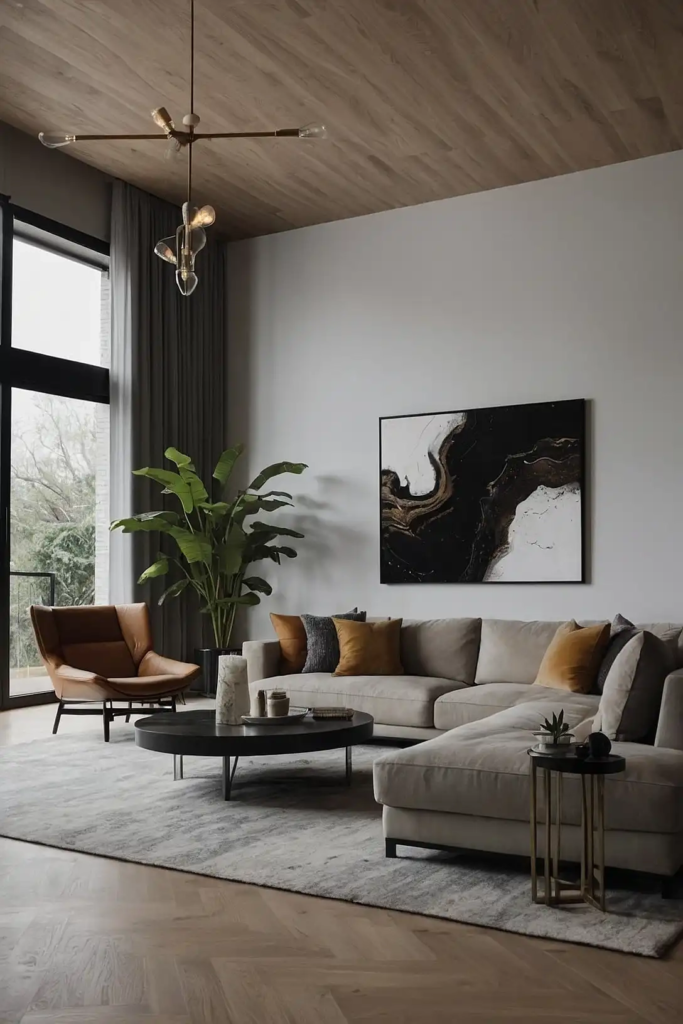
Embrace emptiness as a design element by deliberately leaving breathing room between furniture and on walls.
This restrained approach prevents the visual chaos that undermines modern aesthetics. The intentional space creates calm and highlights your carefully selected pieces.
Resist the urge to fill every corner, allowing each element to make a stronger individual impact.
9: Layered Lighting Scheme

Create ambiance with multiple light sources at different heights rather than relying on a single overhead fixture.
This sophisticated approach improves functionality while adding visual depth. Combine floor lamps, table lamps, wall sconces, and architectural lighting.
Install dimmers for maximum flexibility in creating different moods throughout the day and evening.
10: Indoor-Outdoor Connection
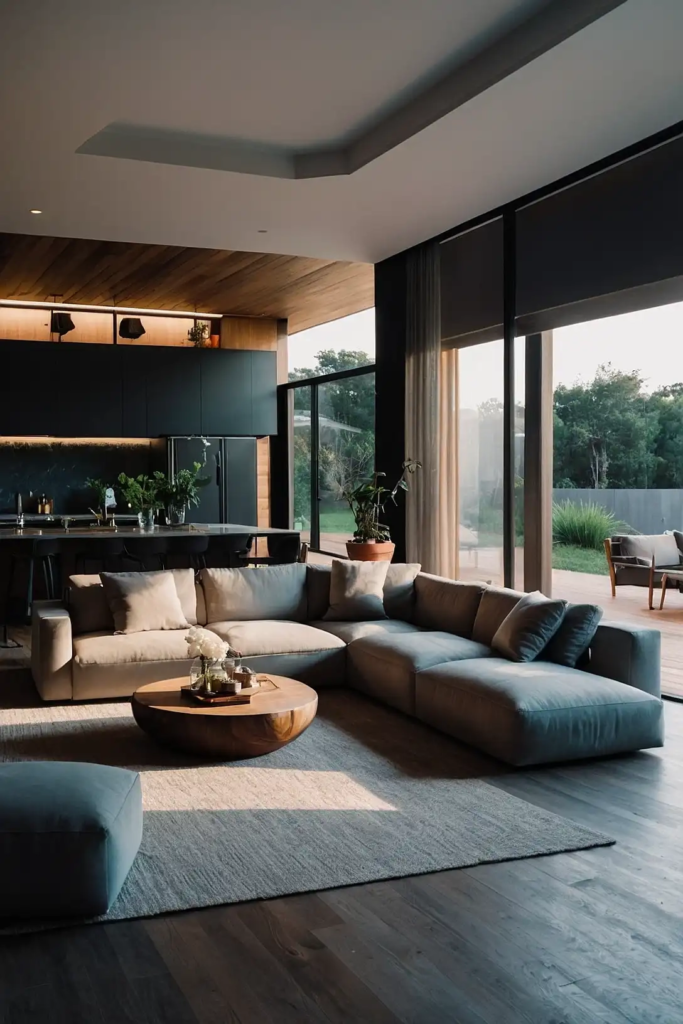
Maximize natural light and views with minimal window treatments that connect interior spaces to the outdoors.
This contemporary approach blurs boundaries while bringing nature’s changing patterns indoors. Choose simple roller shades or ripple-fold drapery when privacy is needed.
Frame windows as intentional “living art” that showcases your exterior landscape throughout the seasons.
11: Statement Area Rug
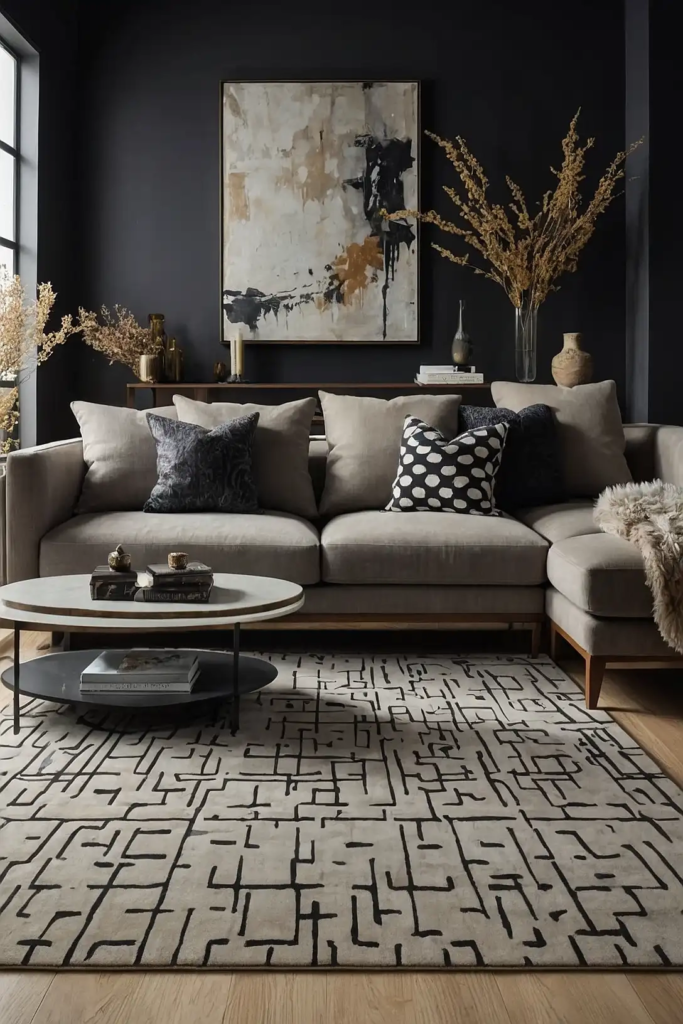
Anchor your seating arrangement with a large-scale geometric or abstract rug that defines the living zone.
This design strategy adds color and pattern while unifying furniture groupings. Choose styles with modern motifs rather than traditional patterns.
Select appropriate sizing that allows all furniture pieces to sit either completely on or completely off the rug.
12: Built-In Storage Solutions
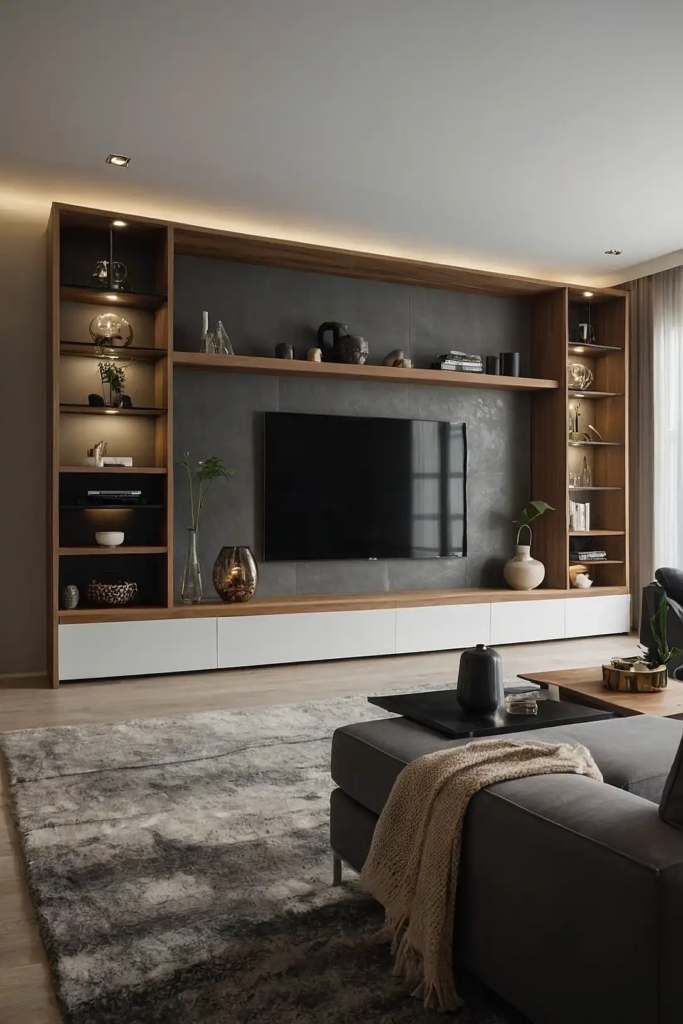
Install custom millwork that maximizes storage while maintaining clean lines and visual simplicity.
These architectural elements eliminate the need for numerous freestanding furniture pieces. Design floor-to-ceiling units for maximum impact and efficiency.
Include a mix of closed cabinets and open shelving to balance practical storage with display opportunities for curated collections.
13: Living Plant Elements
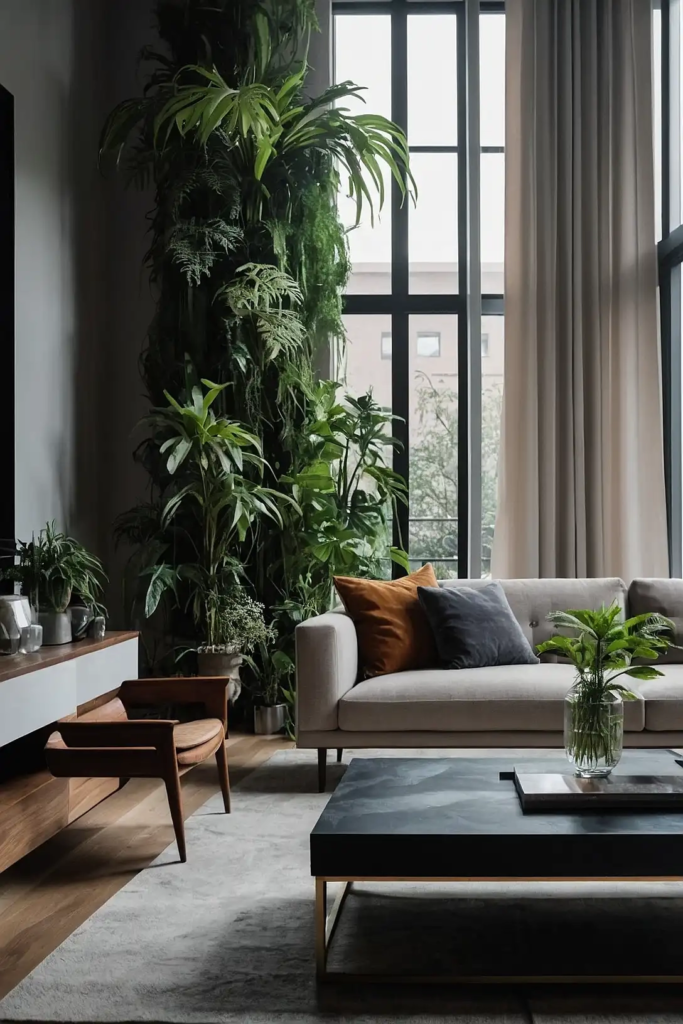
Incorporate large-scale indoor plants as living sculptures that add organic shape and vitality.
This biophilic approach connects modern interiors to nature while improving air quality. Choose architectural varieties like fiddle leaf figs, rubber plants, or bird of paradise.
Position plants in simple, contemporary planters that complement rather than compete with the foliage.
14: Symmetrical Furniture Arrangement

Create balance and harmony through symmetrical placement of key furniture pieces.
This classical approach brings subtle formality and intentionality to modern living spaces.
The predictable arrangement creates instant visual order. Balance matching elements on either side of a focal point like a fireplace, media wall, or significant piece of art.
15: Unexpected Color Accent
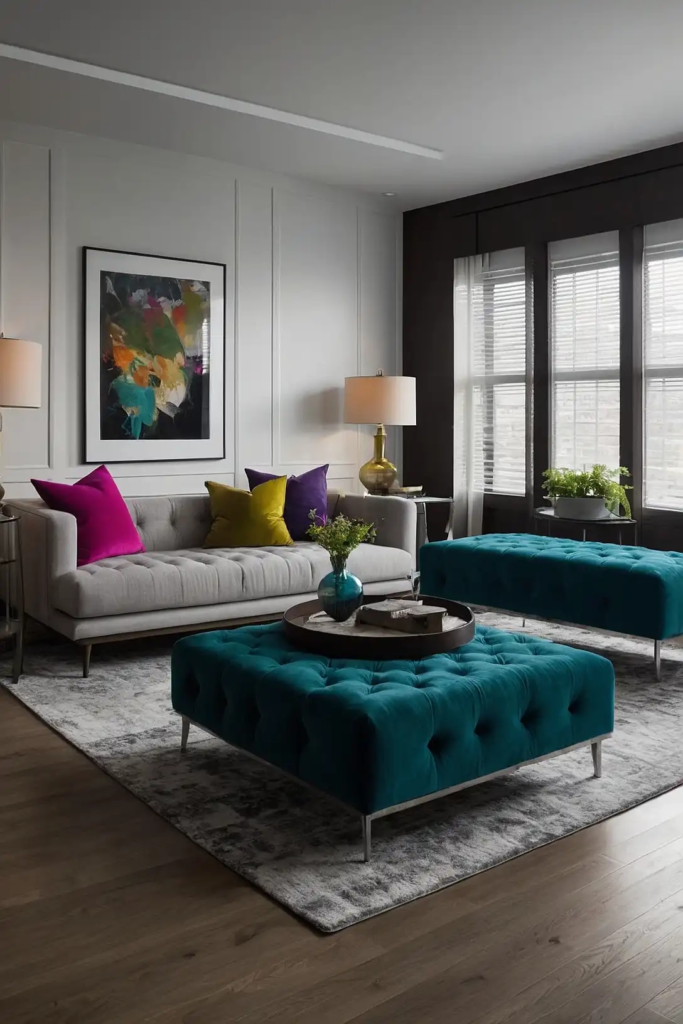
Inject personality with a single bold color through a statement furniture piece or large accessory.
This controlled approach adds energy without overwhelming your modern aesthetic. Limit strong color to one or two elements for true impact.
Set vibrant pieces against neutral backgrounds to create sophisticated figure-ground relationships that feel intentionally designed.
16: Tonal Textural Wall

Create architectural interest with a feature wall in textural materials like fluted wood, three-dimensional tile, or polished concrete.
This application adds subtle pattern through shadow play rather than busy graphics. The tactile surface creates visual intrigue without demanding attention.
Choose neutral colorations that allow the textural elements to create interest through light and shadow rather than contrasting colors.
17: Glass and Transparent Elements
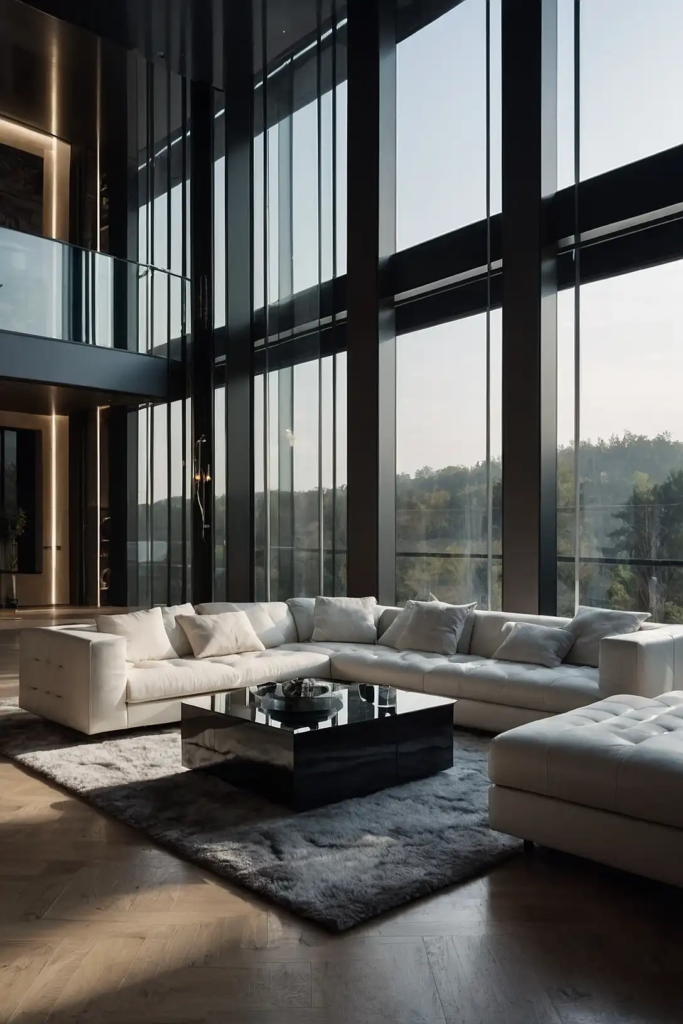
Incorporate clear or smoked glass furniture that preserves open sightlines while providing function.
These visually lightweight pieces help small spaces feel larger and more airy. The transparent materials maintain visual flow throughout the room.
Combine glass with other substantial elements for balanced contrast between weightless and solid components.
18: Minimalist Window Treatments
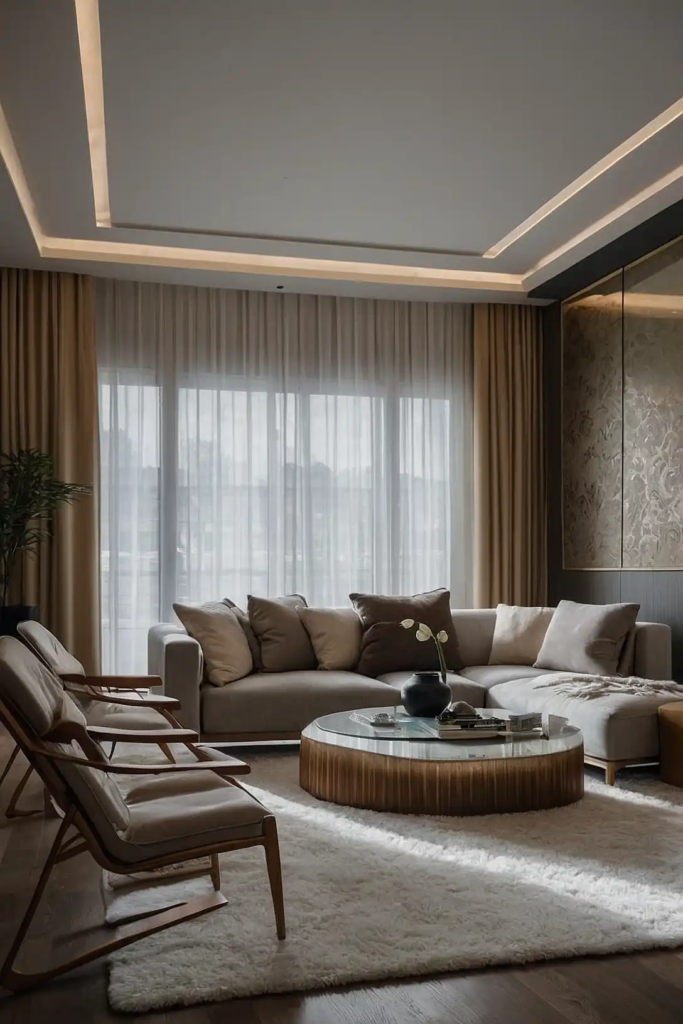
Frame windows with simple, architectural window coverings that enhance rather than hide these important features.
The clean-lined approach maintains connection to outdoor views and natural light. Choose ripple-fold drapery, solid panels, or roller shades in neutral tones.
Mount treatments at ceiling height rather than window height to create the illusion of taller spaces.
19: Floating Shelving Display
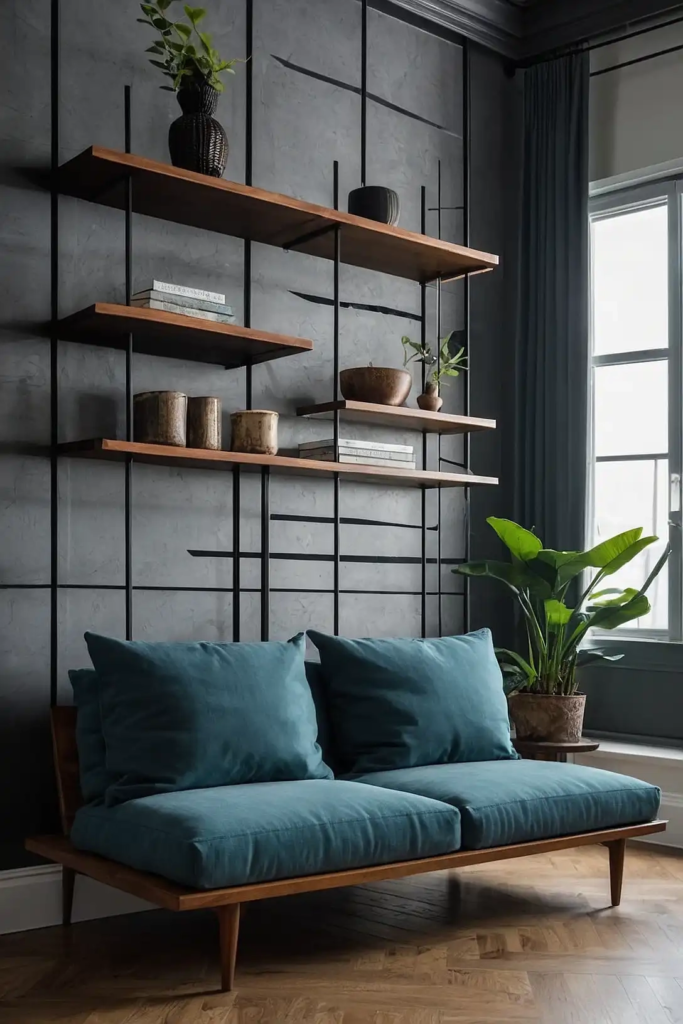
Install sleek floating shelves for curated object displays that add personality without heavyweight furniture.
This minimalist approach provides display opportunities with maximum visual lightness. Arrange objects with careful attention to composition and negative space.
Limit collections to items with special meaning or aesthetic value rather than filling shelves to capacity.
20: Conversation Pit Arrangement
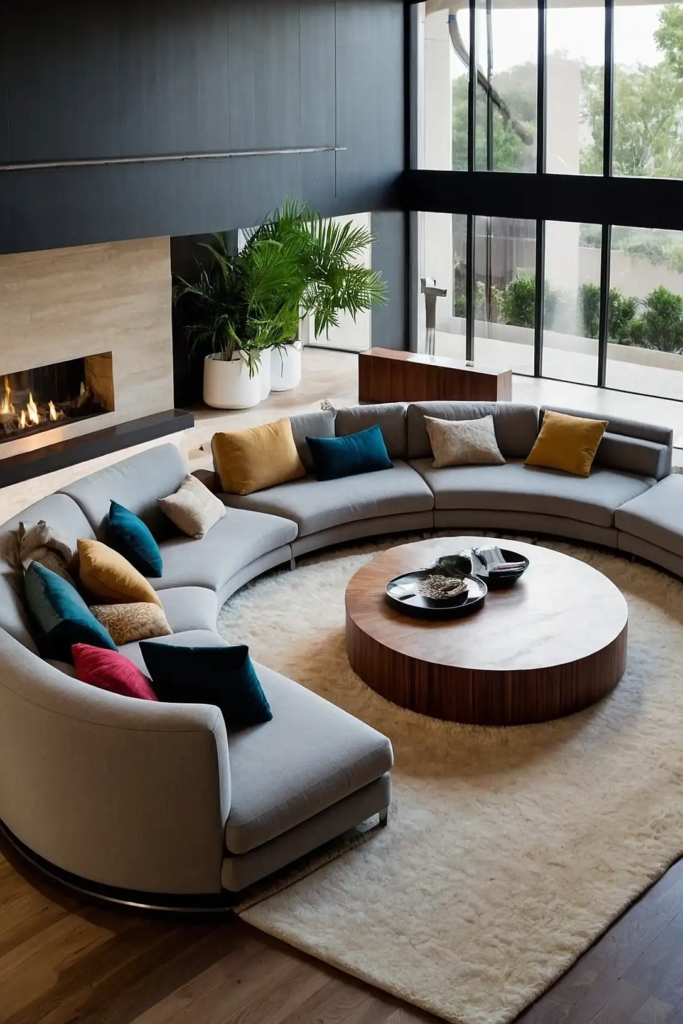
Create an intimate seating area by arranging furniture in an inward-facing configuration that promotes interaction.
This purposeful grouping prioritizes human connection in your living space design. Position seating close enough for comfortable conversation without shouting.
Include a central coffee table or ottoman that serves as both focal point and practical surface for beverages or books.
21: Integrated Technology Solutions

Incorporate smart home features and hidden technology that improve functionality without visual clutter.
This forward-thinking approach maintains clean aesthetics while enhancing convenience. Choose wireless speakers, hidden charging stations, and concealed media components.
Prioritize technology that genuinely improves your living experience rather than gadgets that complicate usage.
Conclusion
Modern living rooms balance aesthetic sophistication with practical livability.
By incorporating these contemporary ideas selectively, you’ll create a space that feels intentionally designed, personally meaningful, and timelessly elegant rather than trend-driven or cold.






